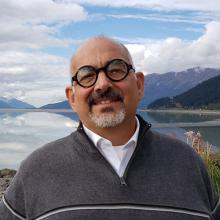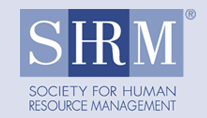Building a More Inclusive Workforce: Effective Processes for Hiring and Retaining Untapped Talent
Status message
A session in this conference ends more than 10 days after the conference! Some sessions may not appear properly in My Session Planner.Session seating is first come, first served. Thank you for your cooperation.
According to the May 2022, Bureau of Labor Statistics Job Openings and Labor Turnover Survey, there are currently 11.5 million job openings in the U.S. How can Diversity, Equity, and Inclusion professionals help our companies fill these job openings and simultaneously increase the diversity of our workforce? One solution is hiding in plain sight. “Hidden workers” are those job seekers often screened out by traditional hiring technology and processes, with research from Accenture and the Harvard Business School’s Project on Managing the Future of Work, projecting over 27.4 million “hidden” workers in our midst.
This talent pool is comprised of people eager to work, already possessing or willing to develop the skills employers seek and include people with physical, mental, or developmental challenges, gaps in employment history, and those from disadvantaged backgrounds. By learning and implementing hiring processes that attract and retain people with disabilities, companies can combat labor shortages and fill open roles with talented candidates. Two-thirds of all business leaders reported that hidden workers performed better in the six key areas most important to employers: attitude and work ethic, productivity, quality of work, employee engagement, innovation, and attendance. Further, research shows that when compared, companies that hire hidden workers were 36% less likely to face talent and skills shortages than companies that do not. By reimagining hiring practices, employers can close skills gaps, improve workforce diversity, boost productivity, and build a culture that brings these workers out of hiding and into the workforce.
Learning Objectives:
- Discover who “hidden workers” are, and their potential to solve labor shortages while increasing workforce diversity.
- Hear effective best practices for reimagining traditional hiring practices that realize the benefits of the untapped talents of people with disabilities.
- Access the tools and resources needed to maximize the potential of workers with disabilities
- Learn how expanding diversity, equity, inclusion efforts to include disability can contribute to a cultural shift towards accessibility in diversity rubrics.
Louis E. Orslene

Louis Orslene is the Director of the Employer and Workplace Policy Team, Office of Disability Employment Policy (ODEP), U.S. DOL. Prior to joining ODEP, Louis served as a Disability Policy Advisor supporting the Department of Defense Office of Diversity, Equity and Inclusion. He also co-directed the Department of Labor’s Job Accommodation Network (JAN). Louis graduated from the University of Pittsburgh with Master's degrees in Public and International Affairs and Social Work. He also holds certifications in Disability Management and Managing Public and Non-Profit Organizations. He holds an undergraduate degree in Human Resource Management.
Barbara Ellen Spitzer

Barbara advises boards of directors and CEOs to drive large-scale, purpose-driven transformation. As a trusted confidante to business leaders, she has earned the right to challenge beliefs, assumptions, and behaviors that act as barriers to change.
A passionate advocate of disability rights, Barbara's mission is to create more inclusive workplaces. She advised the National Organization on Disability (NOD) in building a professional services capability to help employers create disability-inclusive cultures, leaders, and policies and practices.
Barbara is a sought-after speaker and has shared Accenture's Hidden Worker Research and insights on tapping new sources of talent and the future of work. Barbara has authored numerous articles on leadership, HR, and business transformation.
Find Sessions by Day
